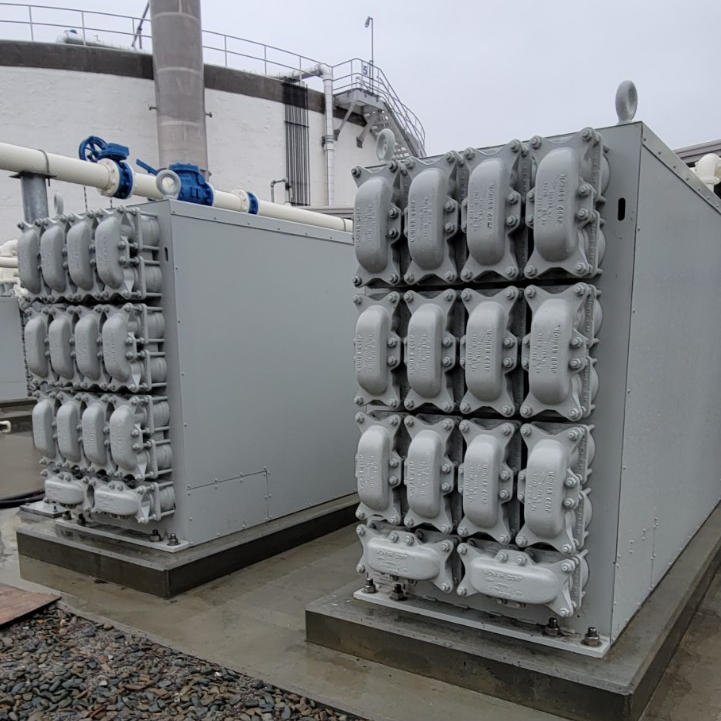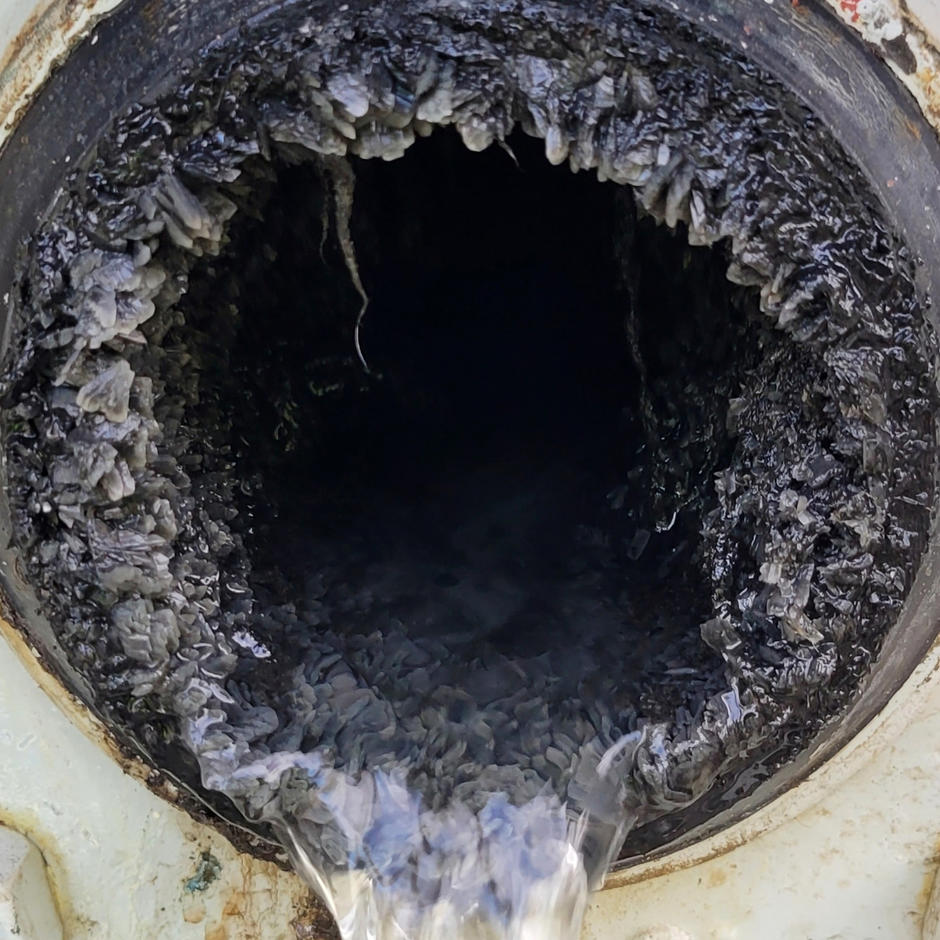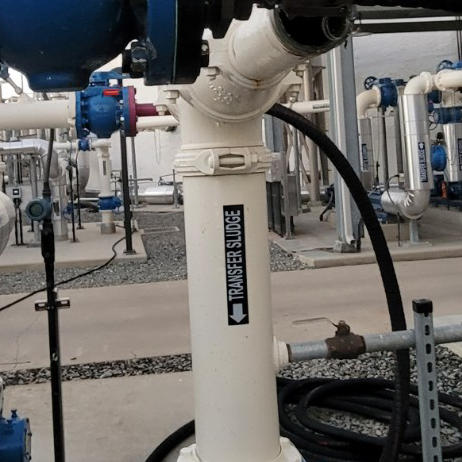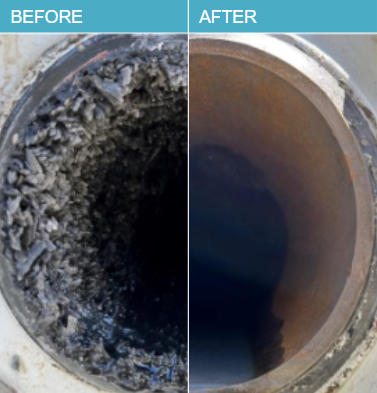The Challenge
A large municipal wastewater treatment authority on the west coast utilizes a robust anaerobic process to treat the sludge produced at the facility. The first stage of the anaerobic treatment process includes a thermophilic process that has a high operating temperature (122° - 140°F). The sludge is then sent to a mesophilic anaerobic digester for further treatment. Since mesophilic anaerobic systems operate at around 100°F, the sludge needed to be cooled using heat exchangers after the thermophilic digester.
The sludge from the thermophilic digester had high levels of phosphorus and other contaminants, resulting in extreme mineral scaling within the twin heat exchangers’ 4” pipes. The scaling, which was approximately 1.5” thick, reduced the flow within the system by 80%. This created a bottleneck within the process, preventing the system from operating at its intended flow rate and forcing the operator to bypass the heat exchanger which degraded the treatment performance of the second digester.


The Client
A municipal wastewater facility on the west coast treating an average flow rate of 100 MGD (Peak Flow: 167 MGD)

THERMOPHILIC SLUDGE CHARACTERISTICS
Ammonia: 805 mg/l
Calcium: 909.71 mg/l
Magnesium: 260.93 mg/l
Orthophosphate: 2373 mg/l
Sodium: 251.86 mg/l
pH: 7.95
Chemical Service Solution
Veolia Water Technologies evaluated the scaling issues within the heat exchangers and recommended a chemical service cleaning solution to rapidly descale deposits within the heat exchanger and connected piping.
Veolia’s chemical cleaning utilized Hydrex 5312, an organo-modified blend of proprietary non-hazardous acids, surfactants, and anti-scaling agents. The chemical was pumped into and heat exchanger system and recirculated continuously to dissolve the scale and remove the accumulated deposits within the system.
The rapid cleaning process was able to be completed quickly resulting in minimal downtime of the heat exchanger.
Results
The chemical cleaning service using Hydrex 5312 was extremely effective in dissolving the scale within the heat exchanger’s 2,392 feet of piping.
It is estimated that there was more than 5.6 tons of scaling deposited inside the heat exchanger prior to the cleaning. This reduced the flow rate down to 40 gpm, 20% of the expected flow rate. After the cleaning, the system exceeded expectations and was operating at 300 gpm, which is 150% of the designed flow rate.

About the Hydrex 5312 Chemical Cleaning System
Hydrex 5312 is NSF certified, OSHA compliant material that does not contain any halogens, heavy metals, or watchlist ingredients. The biodegradable solution quickly and effectively attacks and dissolves
blockages of struvite, vivianite, calcium carbonate, and other mineral buildups.


